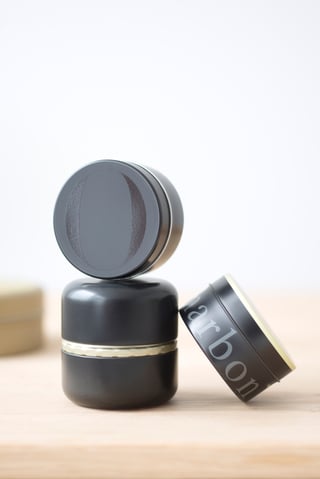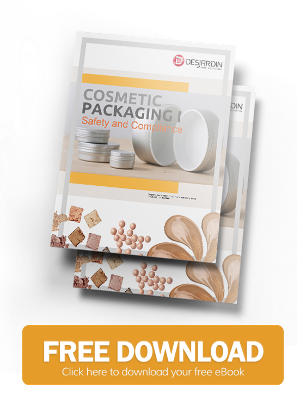Small cosmetic packages are gaining relevance, due to changing consumer behaviour. ISO 22715, section 4.2.1., lays out the basics that you need to know as a cosmetics vendor. This article summarizes what is important for cosmetics manufacturers.
Why is the ISO 22715 important
While ISO 22715 is not legally binding, it is however, the common denominator of most of the national regulations that apply to the packaging and labeling of cosmetic products. Country regulators refer to ISO standards as guidelines to best practices for the various sectors for which they apply. Often, in order to comply with a local regulation, an individual, business or manufacturer must comply with the applicable ISO standard(s).
The following sections shed light on the important points that need to be considered, when packaging small cosmetic containers compliant to the ISO 22715.
Summary of ISO 22715, section 4.2.1.
The main takeaway from section 4.2.1 concerns the weight of the package. Items that weigh between under 15 grams or 15 milliliters and over 10 grams or 10 milliliters shall state on secondary packaging:
- name of the person responsible for placing the product on the market (manufacturer, authorized agent, responsible marketer)
- information may be abbreviated if it identifies the company
- storage conditions, when appropriate
- precautions and warnings, when appropriate
Label Information
 The same rules apply to small packages as large packages when it comes to ingredients. Any ingredients that represent over 1% of the contents must be listed in descending order of weight when they were added. That set of ingredients is followed by another set of ingredients that represent 1% or less of the contents.
The same rules apply to small packages as large packages when it comes to ingredients. Any ingredients that represent over 1% of the contents must be listed in descending order of weight when they were added. That set of ingredients is followed by another set of ingredients that represent 1% or less of the contents.
Perfumes and aromatic products may be listed as single ingredients. Colorants may be listed with the words "may contain" with the "+/-" symbols. The label must also contain this information:
- function of the product, unless it's already clear
- product ID numbers, such as manufacture batch number
- date of manufacturing
- instructions for use, when appropriate
Examples of Small Cosmetic Products
- cream tubes
- eyeshadow
- fingernail polish
- makeup
- perfumes
Small Package ISO Requirements
Small packages are defined as weighing less than 15 grams or 15 milliliters. Such packages must have product information on the primary and secondary packaging. The function of the product, however, only needs to appear on the secondary packaging.
In cases when the lack of product information can cause confusion about use or misuse, it's necessary to include the information on primary packaging. The information must be visible to the consumer at the point of sale. Products in packages of 10 g or 10 ml and below do not require the information mentioned regarding nominal content at the time of packaging, given by weight and volume.
The Future of Small Packages
 Many purveyors of cosmetics are faced with the challenge of marketing smaller packages for the increasing demand of travelers who enjoy mobile products. Convenience of minimal storage space has become a big priority for travelers. Studies show that cosmetic products that aren't portable tend to be unused by their expiration dates.
Many purveyors of cosmetics are faced with the challenge of marketing smaller packages for the increasing demand of travelers who enjoy mobile products. Convenience of minimal storage space has become a big priority for travelers. Studies show that cosmetic products that aren't portable tend to be unused by their expiration dates.
Since the average consumer carries at least 5 of 40 cosmetic products with them daily, there's a big advantage to shaping packaging for portable use. Makeup that isn't portable ends up being makeup left behind and is less likely to be used. Keep in mind as well that 75% of individuals who use makeup between the ages of 25 and 50 do not finish their makeup.
At the same time, 89% of women keep old makeup in case they need it at a later time, according to a study by Poshly. Most of these women keep the makeup even after its expiration date. This fact has led to the debate as to whether the cosmetology industry should market even smaller packages.
Conclusion
Manufacturers who want to sell cosmetics that come in small packages, need to pay attention to the weight and volume of the product. Unless the product weighs less than 10 g or 10 ml, it must follow ISO standards associated with primary and secondary packaging. Much of the information that is required for normal packaging applies to small packaging as well. There are plenty of reasons to venture into the niche of small packaging of cosmetic products, particularly to aim at the growing mobile market.
Disclaimer:
The postings in this blog section do not necessarily represent Desjardin's positions, strategies or opinions.
References and Further Reading
- More posts on Cosmetic Packaging, by Alex Cosper and Dawn M. Turner
- Is It a Cosmetic, a Drug, or Both? (2016), by the U.S. Food and Drug Administration
- Regulation (EC) No ´1223/2009 on Cosmetic Products (2009), The European Parliament the the European Council
- ISO 22715:2006: Cosmetics -- Packaging and labelling (2006), International Organization for Standardization






